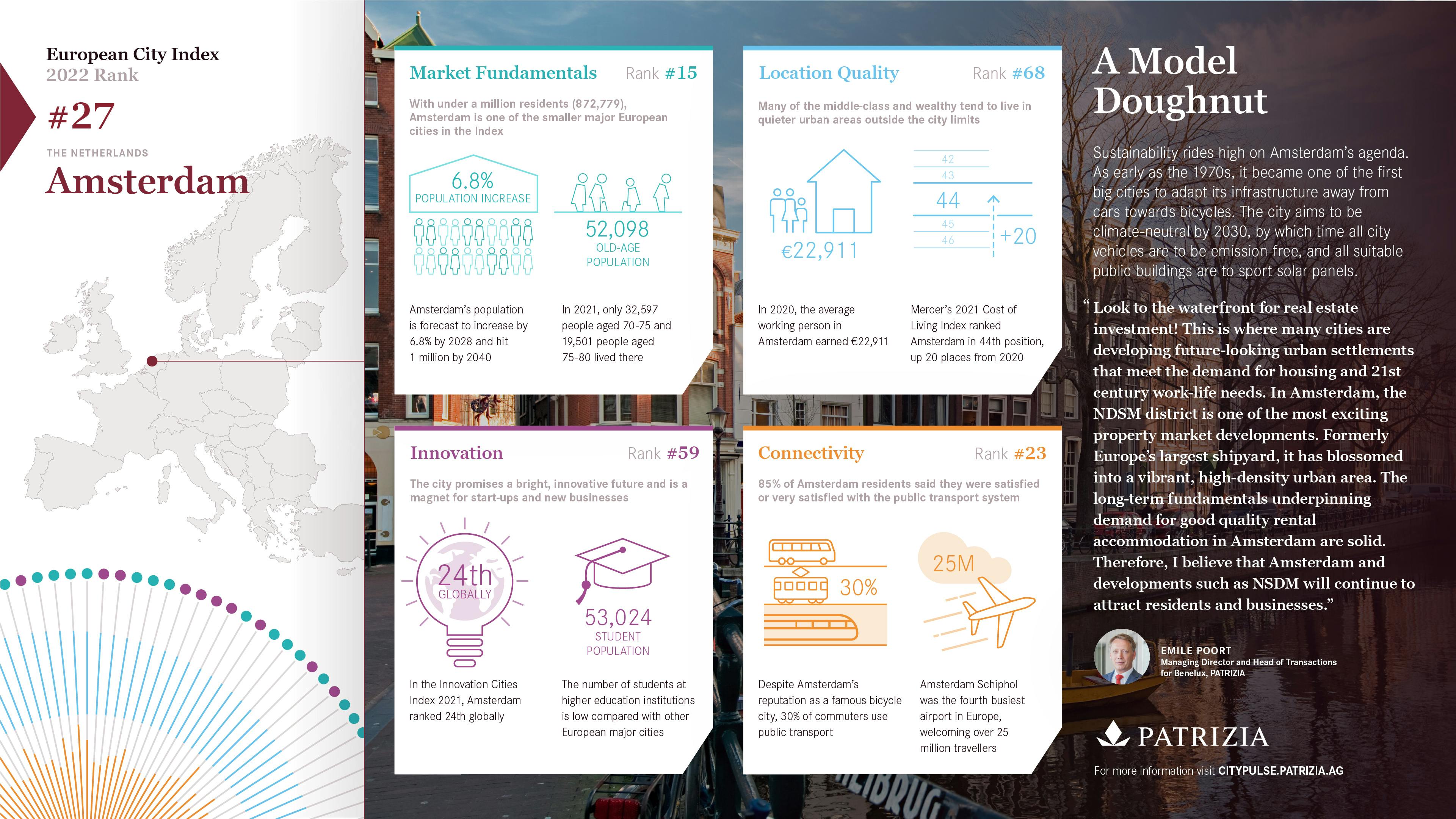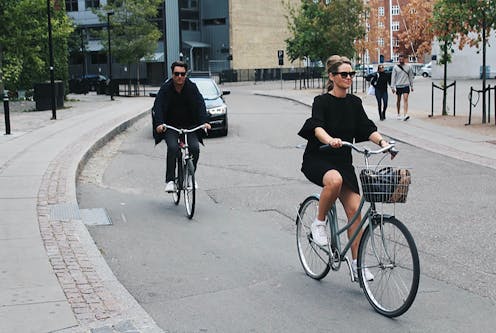A Model Doughnut
Sustainability rides high on Amsterdam’s agenda. As early as the 1970s, it became one of the first big cities to adapt its infrastructure away from cars towards bicycles. The city now aims to be climate-neutral by 2030 by which time all city vehicles are to be emission-free, and all suitable public buildings are to sport solar panels.
But the city’s ‘green’ initiatives are not only driven by environmental concerns. They form part of a wider socially minded view of sustainability, which embraces the ‘doughnut economic model’. This says the success of an economy is not measured in GDP growth alone, but rather in the degree to which it benefits both people and the planet.
An example of how Amsterdammers live out this ideal is the creative hub de Ceuvel in Amsterdam-Noord. It is built entirely on salvaged houseboats. At ground level, it has phyto-remediating plants working to purify the once-polluted soil surrounding the area. It is also known locally as a great organic café and bar venue. Above all, it is a business park where ecologically minded entrepreneurs and creatives test out new technologies to solve global problems.
Good ranking on liveability
Amsterdammers are free thinkers and they do things differently. If you add this positive energy to the city’s rich history, cultural diversity and aesthetic beauty, it is no wonder that Amsterdam tops global liveability indexes.
According to OECD Better Life Index, the Dutch are more satisfied with their lives than the OECD average. When asked to rate their general satisfaction on a scale from 0 to 10, Dutch people gave it an 8.7 grade on average. In terms of Numbeo’s 2024 Quality of Life Index, the Netherlands was ranked the second-best country worldwide. Since good liveability rankings help attract talent and business, Amsterdam’s housing market should remain strong in the long-term.
However, Amsterdam has faced challenges related to housing affordability, partly due to its high liveability ranking, which leads to increased demand and rising property prices. The city has responded by implementing measures to regulate short-term rentals and increase the availability of affordable housing, which are essential aspects to consider when discussing its long-term sustainability and liveability.
As Amsterdam evolves, the city's commitment to integrating sustainability with urban growth can readily be seen in projects like the NDSM, a revitalised shipyard transformed into a creative hub, attracting artists, designers, and entrepreneurs. With a strong demand for quality rental housing and a dynamic business environment, Amsterdam remains a magnet for residents and investors. Being one of Europe's main logistics hubs – boasting the continent's third-largest airport and fourth-largest harbour – contributes to Amsterdam's vitality. Furthermore, it serves as a crucial stepstone for Europe's financial industries. The city's strategic focus on creating vibrant, liveable spaces ensures creativity and innovation will be central to its continued growth and appeal as a global destination.
Emile Poort, Managing Director and Head of Transactions for BENELUX, PATRIZIA
PATRIZIA City Snapshot


17
Amsterdam’s Market Fundamentals Ranking
With under a million residents (873,338), Amsterdam is one of the smaller major European cities in the Index. But Amsterdam also taps into the wider power of an urban area of 1.6 million residents and a metropolitan area of 2.5 million. Amsterdam’s population is forecast to increase by 6.8% by 2028 and hit 1 million by 2040. Amsterdam’s high living costs deter older people from residing in the market, as most retired persons cannot afford its high rental levels. In 2021, only 32,597 people aged 70-75 and 19,501 people aged 75-80 lived there (employment-to-population ratio).




